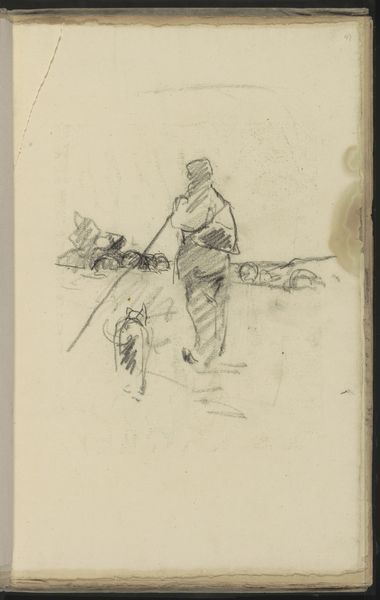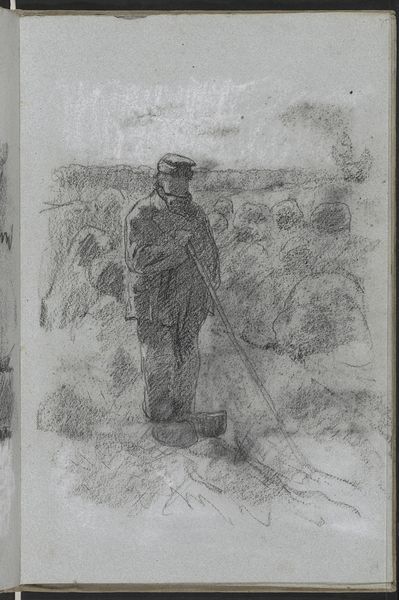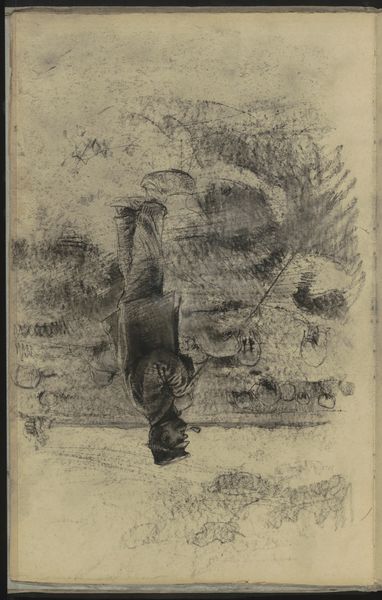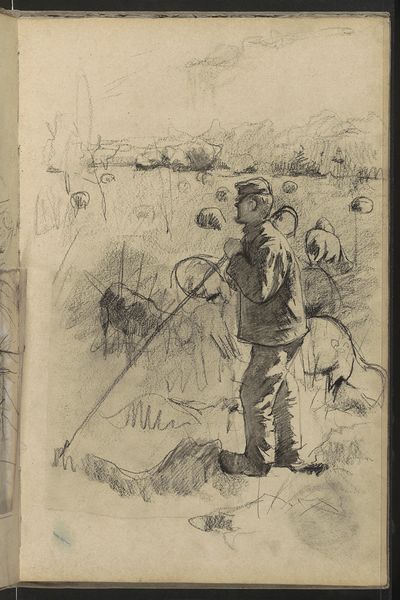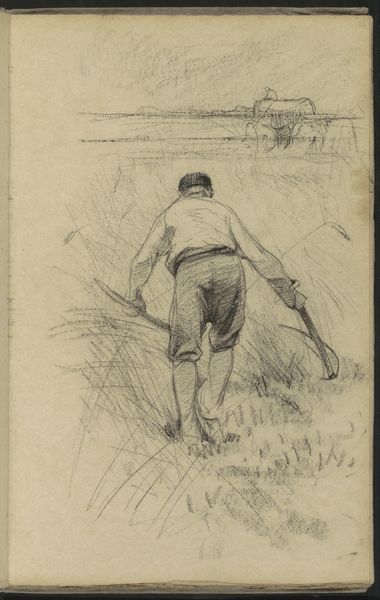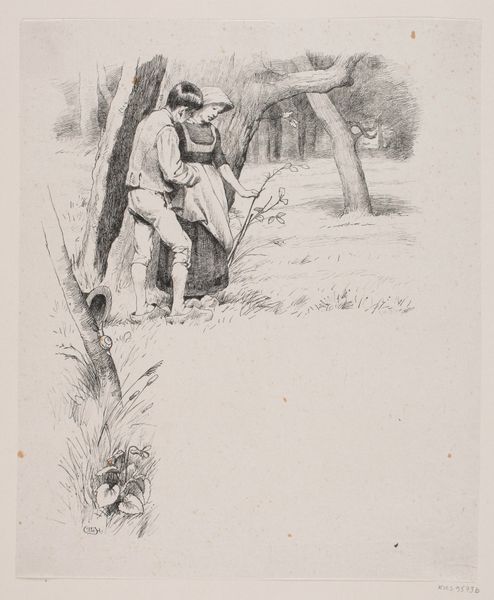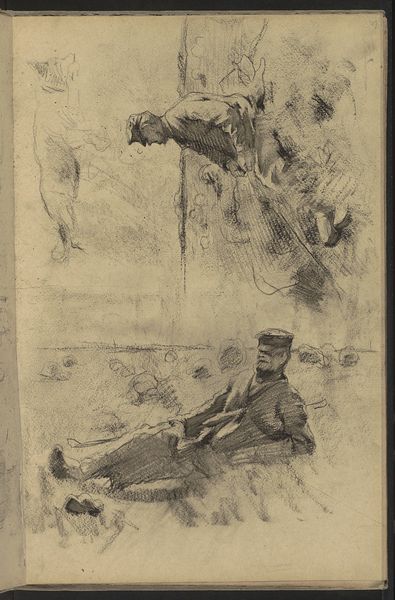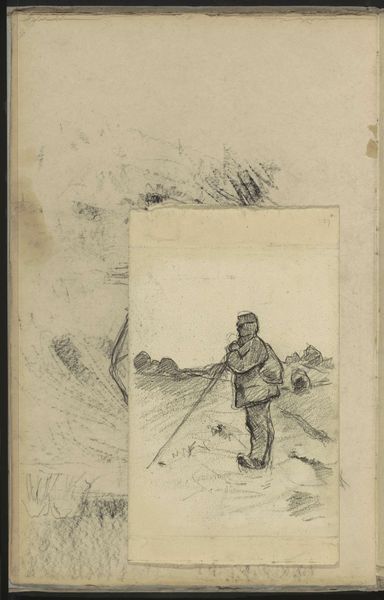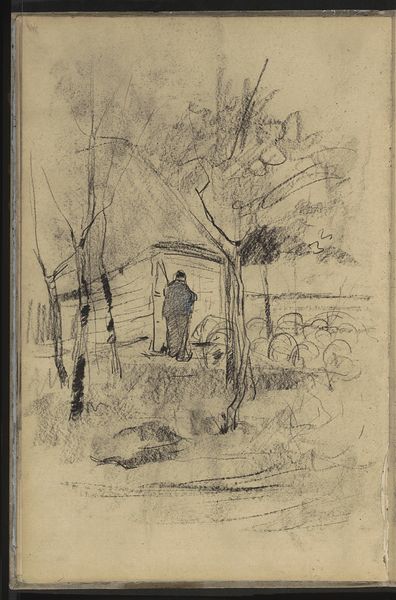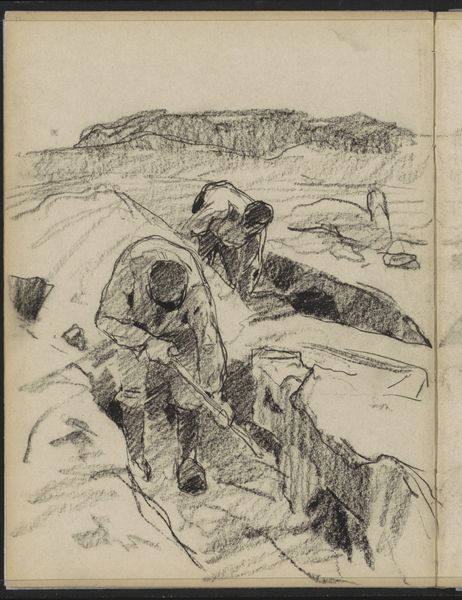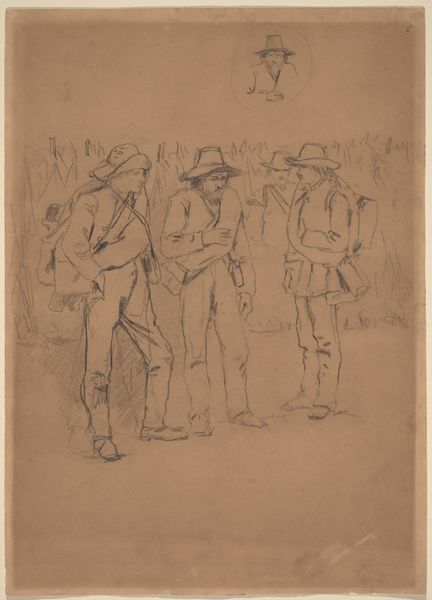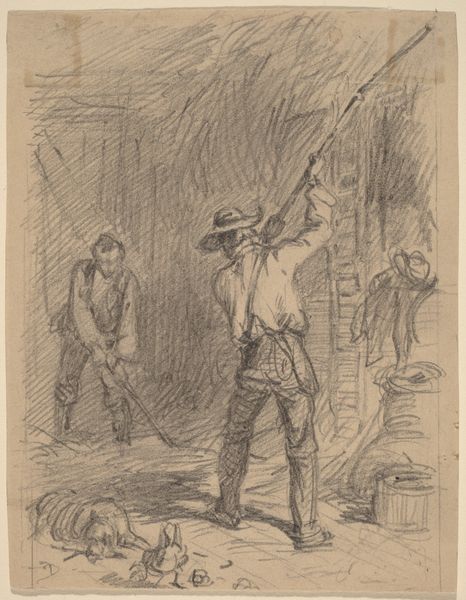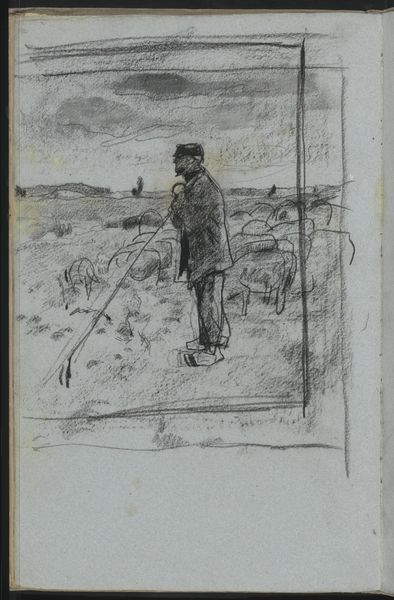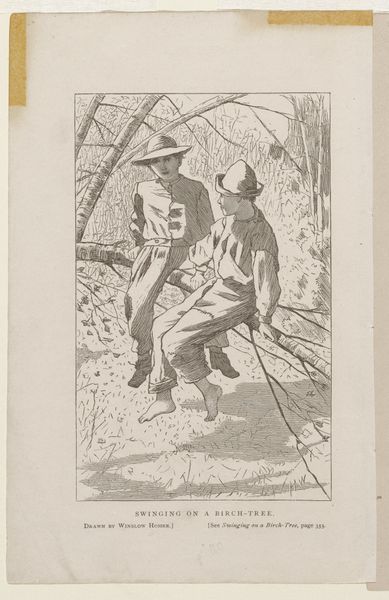
drawing, pencil
#
drawing
#
toned paper
#
pen sketch
#
pencil sketch
#
sketch book
#
landscape
#
figuration
#
personal sketchbook
#
sketchwork
#
pen-ink sketch
#
pencil
#
pen work
#
sketchbook drawing
#
sketchbook art
#
realism
Copyright: Rijks Museum: Open Domain
Curator: This is Willem Witsen's "Schaapherder in een landschap," or "Shepherd in a Landscape," dating from around 1884 to 1887. It's a pencil and pen drawing on toned paper, part of the Rijksmuseum's collection. Editor: My first impression is one of quiet solitude, almost melancholy. The loose, sketchy lines give it a feeling of transience, as if capturing a fleeting moment. The muted tones only enhance that feeling. Curator: The figure of the shepherd, positioned centrally, really anchors the composition. I think, though, that this image operates as an intersection for discourses around class, labor, and the idealization of rural life prevalent in the late 19th century. Is Witsen romanticizing the working class, or realistically depicting their burdens? Editor: Perhaps a bit of both? The staff the shepherd carries, for example, has layers of meaning. On one level, it’s simply a practical tool for guiding sheep. Yet, it also carries echoes of biblical associations, suggesting a protector, a leader, or even a spiritual guide. Think of the symbolic weight a shepherd held within Christianity, linking him to the ideas of caring, watching over a flock, and guardianship. Curator: Interesting, so that then informs how we might understand the symbolism of labor at the time. I see the posture, and clothing, really, of the shepherd as a type of representation of the realities of work, of an ordinary man, caught in a landscape not his own. How do you see it reflecting anxieties about industrialization and urbanization that gripped the Netherlands at the time? Was this a statement about rural struggles against rising economic tides? Editor: It certainly suggests that! There’s a nostalgia for the rural that feels particularly poignant, seeing how rapid the industrial changes of that time were occurring. Beyond just rural idylls, I feel a real respect woven into its composition, perhaps. His face obscured, it is not individualist but emphasizes a community, representing many more like him in an increasingly marginalized state. That muted palette only helps him melt more organically into his landscape and circumstance. Curator: That resonates. Perhaps Witsen wanted the symbolism of the everyman, the quiet worker against shifting power and the cultural upheaval during his lifetime, with that kind of subtlety that gives it that emotional resonance, too. Thank you for unpacking those potential layers and symbolic readings together! Editor: My pleasure, Curator, this image becomes far more interesting by opening up consideration to these subtle clues together, letting new appreciation and thought develop beyond face-value reception!
Comments
No comments
Be the first to comment and join the conversation on the ultimate creative platform.
